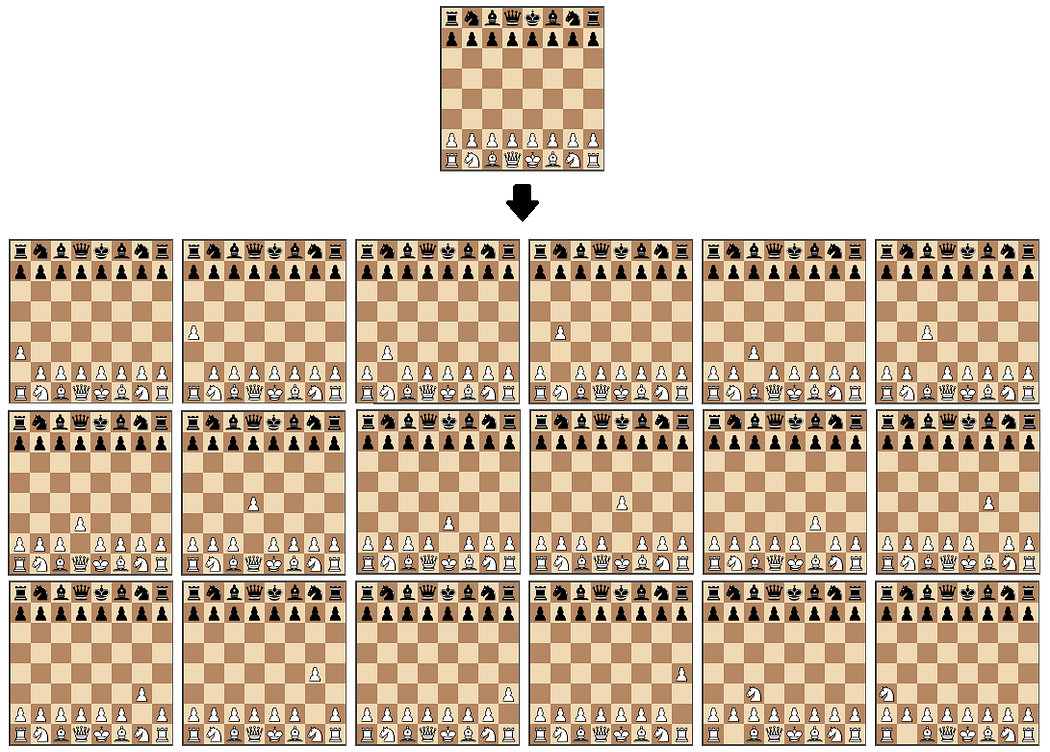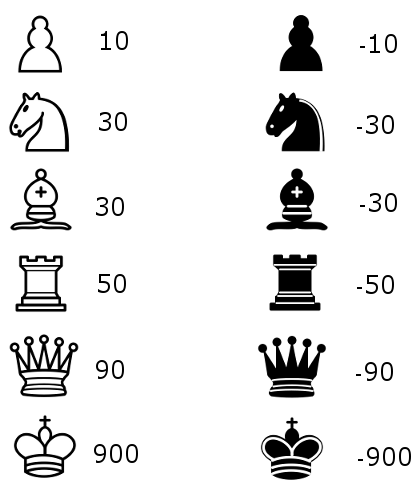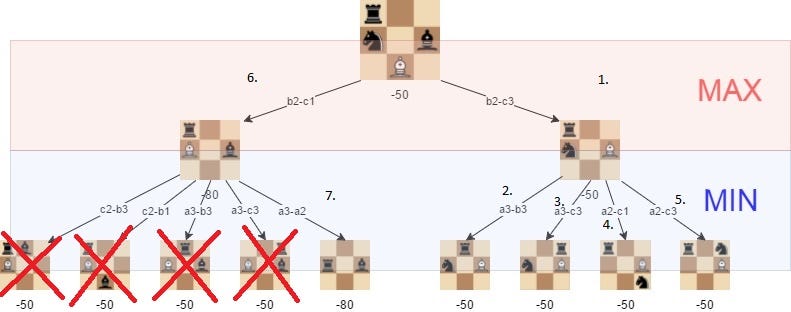Let's learn, share & inspire each other. Sign up now 🤘🏼
 ARTICLE
ARTICLE
 6 min read
6 min read
A step-by-step guide to building a simple chess AI

Let’s explore some basic concepts that will help us create a simple chess AI:
- move-generation
- board evaluation
- minimax
- and alpha beta pruning.
At each step, we’ll improve our algorithm with one of these time-tested chess-programming techniques. I’ll demonstrate how each affects the algorithm’s playing style.
Step 1: Move generation and board visualization
We’ll use the chess.js library for move generation, and chessboard.js for visualizing the board. The move generation library basically implements all the rules of chess. Based on this, we can calculate all legal moves for a given board state.

A visualization of the move generation function. The starting position is used as input and the output is all the possible moves from that position.
Using these libraries will help us focus only on the most interesting task: creating the algorithm that finds the best move.
We’ll start by creating a function that just returns a random move from all of the possible moves:
Although this algorithm isn’t a very solid chess player, it’s a good starting point, as we can actually play against it:

Step 2 : Position evaluation
Now let’s try to understand which side is stronger in a certain position. The simplest way to achieve this is to count the relative strength of the pieces on the board using the following table:

With the evaluation function, we’re able to create an algorithm that chooses the move that gives the highest evaluation:
The only tangible improvement is that our algorithm will now capture a piece if it can.

Step 3: Search tree using Minimax
Next we’re going to create a search tree from which the algorithm can chose the best move. This is done by using the Minimax algorithm.
In this algorithm, the recursive tree of all possible moves is explored to a given depth, and the position is evaluated at the ending “leaves” of the tree.
After that, we return either the smallest or the largest value of the child to the parent node, depending on whether it’s a white or black to move. (That is, we try to either minimize or maximize the outcome at each level.)

A visualization of the minimax algorithm in an artificial position. The best move for white is b2-c3, because we can guarantee that we can get to a position where the evaluation is -50
With minimax in place, our algorithm is starting to understand some basic tactics of chess:

The effectiveness of the minimax algorithm is heavily based on the search depth we can achieve. This is something we’ll improve in the following step.
Step 4: Alpha-beta pruning
Alpha-beta pruning is an optimization method to the minimax algorithm that allows us to disregard some branches in the search tree. This helps us evaluate the minimax search tree much deeper, while using the same resources.
The alpha-beta pruning is based on the situation where we can stop evaluating a part of the search tree if we find a move that leads to a worse situation than a previously discovered move.
The alpha-beta pruning does not influence the outcome of the minimax algorithm — it only makes it faster.
The alpha-beta algorithm also is more efficient if we happen to visit first those paths that lead to good moves.

The positions we do not need to explore if alpha-beta pruning isused and the tree is visited in the described order.
With alpha-beta, we get a significant boost to the minimax algorithm, as is shown in the following example:

The number of positions that are required to evaluate if we want to perform a search with depth of 4 and the “root” position is the one that is shown.
Step 5: Improved evaluation function
The initial evaluation function is quite naive as we only count the material that is found on the board. To improve this, we add to the evaluation a factor that takes in account the position of the pieces. For example, a knight on the center of the board is better (because it has more options and is thus more active) than a knight on the edge of the board.

The visualized piece-square tables visualized. We can decrease or increase the evaluation, depending on the location of the piece.
With the following improvement, we start to get an algorithm that plays some “decent” chess, at least from the viewpoint of a casual player:



 Comment
Comment







Shaju 23 Sep, 2022
The only major problem (not considering random moves) is that the pieces don’t seem to capture pieces, even when it’s a Queen being challenged by a pawn!
Parveen 23 Sep, 2022
The visualizations for minimax and alpha-beta pruning are so helpful!